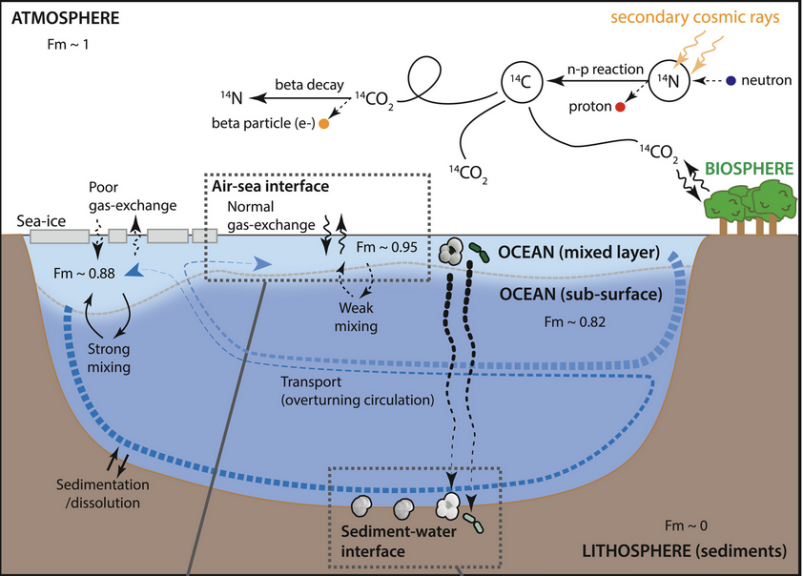
Lead supervisor: Laura Cimoli, DAMTP
Co-supervisor: Luke Skinner, Earth Sciences
Brief summary:
This project will use radiocarbon observations and inverse methods to reveal how the past ocean circulation, different from present day, affected the global carbon cycle
Importance of the area of research concerned:
The oceans are the main repository for carbon and heat in our climate system, and they have taken up about 1/3 of anthropogenic carbon emissions, acting to mitigate the effect of climate change. Whether such mitigation role will persist in the future is unknown: changes in the ocean carbon chemistry equilibrium and changes in ocean circulation can lead to rapid modifications in both global and regional carbon cycle. Through the lens of the past, we can better understand carbon cycle natural variability. For example, radiocarbon measurements from the deep ocean have underlined the role of the overturning circulation in effecting rapid and intense changes in regional climate and carbon cycling ~11-15,000 years ago. Ongoing work is seeking to combine radiocarbon observations with auxiliary proxies that may help to quantify the past ocean transport, its impact on the marine respired carbon inventory, and therefore atmospheric CO2 (Skinner & Bard, 2023).
Project summary :
How different was the past (~10-20,000 years ago) ocean circulation in comparison with present day? And how did it affect the sequestration, distribution and respiration of carbon? Radiocarbon observations return carbon residence times and/or carbon exchange between different carbon reservoirs. They are also used in numerical models to investigate the contributions of ocean circulation on the carbon cycling. Inverse models allow us to investigate pathways of different waters masses from the surface to the ocean interior (e.g. Gebbie & Huybers, 2010). In this project, existing inverse models and numerical simulations will be "tuned" with radiocarbon observations to obtain a representation of past ocean circulation, which will then help better understanding the past carbon cycle.
What will the student do?:
This project will use available radiocarbon observations and the Total Matrix Intercomparison (TMI) inverse method (Gebbie & Huybers, 2010). The TMI returns information about the ocean transport at each location in the ocean interior for the present day. Radiocarbon observations will be used both as individual data-points, as well as gridded products produced by numerical models. Such observations will be used to investigate how ocean circulation must have differed from the present day to match the available observations. The students will conduct a series of data analysis on the available observations and numerical analysis with the TMI to reconstruct past ocean circulation. The results will be used to investigate how changes in the ocean circulation can affect the exchange of carbon between ocean and atmosphere, hence impacting the oceanic carbon storage. The student will have the possibility to participate in relevant summer schools/workshops, present the work at national and international conferences, and visit the potential project partners at Woods Hole Oceanographic Institution.
References - references should provide further reading about the project:
Skinner, L. C., & Bard, E. (2022). Radiocarbon as a dating tool and tracer in paleoceanography. Reviews of Geophysics, 60(1), e2020RG000720.
Gebbie, G., & Huybers, P. (2010). Total matrix intercomparison: A method for determining the geometry of water-mass pathways. Journal of Physical Oceanography, 40(8), 1710-1728.
Khatiwala, S., J. Muglia and A. Schmittner (2019). "Air-sea disequilibrium enhances ocean carbon storage during glacial periods." Science Advances 5: 1-10.
Applying
You can find out about applying for this project on the Department of Applied Mathematics and Theoretical Physics (DAMTP) page.